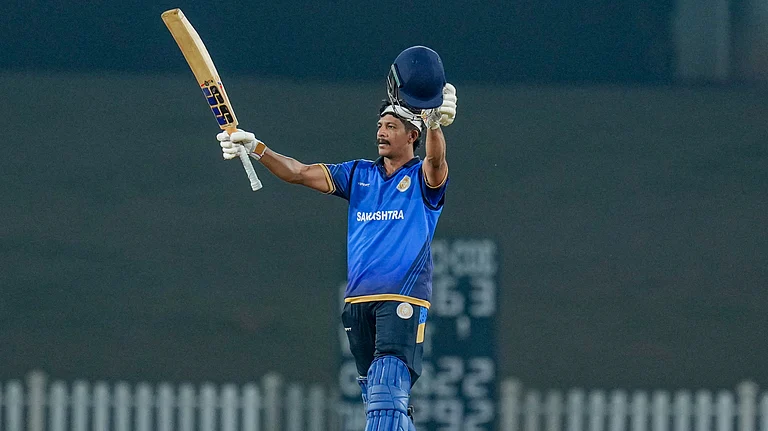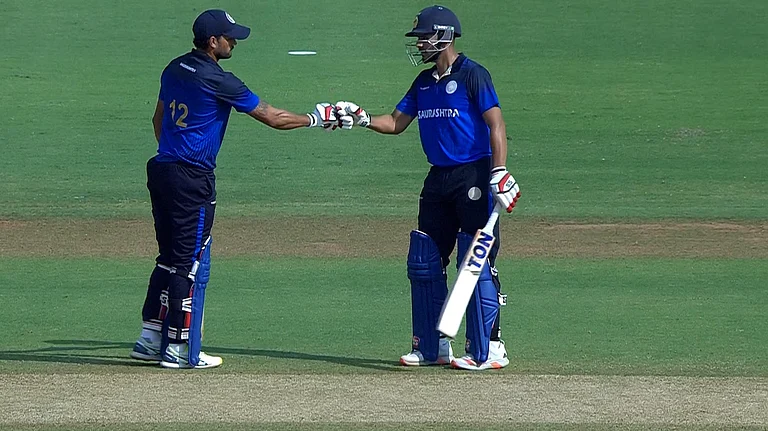If you are a keen angler and can travel great distances to catch the wild mahseer, you may have visited Nameri in Assam. If you like long drives through bad roads and high passes, you may have taken the same road through Bhalukpung into Arunachal Pradesh. Either way, when you approach Nameri, the two sides of the narrow highway are dotted with chopped tree stumps. In the years after 2003, any interest in why so many trees were chopped would invite violent reactions from the Bodo villagers who were settled on these flattened reserve forests. Now they ignore it or even admit upfront.
As one moves towards Tezpur (also the headquarters of the Indian army’s 4 Corps) and further to Mangaldoi, such denuded landscapes are a common sight. Now there are regular paddy fields or villages with tell-tale signs of what used to be. The rate of deforestation was rapid and blatant. Everyone enjoyed the booty. Even elected legislators in the Congress government were caught in the act. The uprooting of trees, though, was rooted in a deeper idea. The Bodos (a plains tribe of Assam) were being settled across a stretch that bordered Assam with Arunachal Pradesh. Village after village was designated, given names and superimposed on what used to be tiger reserves in some areas.
The story of Bodoland (a homeland for Bodos) is too recent for people to forget. It has been a violent assertion of identity. The anarchy let loose on the plains of the Brahmaputra was systematic, with a definite pattern. For those who haven’t followed the story of Assam, the Bodo assertion started in the ’80s and was followed up by an accord, an autonomous council and then a territorial council in 2003. What does that imply? Under the 6th Schedule of the Indian Constitution, educational, economic and linguistic aspirations, land rights and the socio-cultural and ethnic identity of Bodos were secured. The others inhabiting the area were not taken into consideration. The debate on the 6th Schedule in the Constituent Assembly was originally oriented towards hill tribes. Any which way you take it, it did not grant reservation to one community. The Bodos, however, extracted this from the government and reserved 75 per cent of the seats in the Territorial Council, thus denying the area’s other residents their legitimate rights. Thus was born the Bodoland Territorial Autonomous Districts (BTAD), which claimed 35 per cent of Assam’s land. The Bodos need another 15 per cent to raise the pitch for their long-standing demand of halving Assam.
As it is, the BTAD’s birth pangs are still being felt. A students’ movement, an armed terror group (BLT) demanding statehood—and now governing the area—and another heavily armed group demanding sovereignty (NDFB) makes the Bodo movement one of the most violent in the country. The Bodo Liberation Tigers (BLT), formed in 1996, have been involved in mass murders, blowing up trains (they control the strategic chicken’s neck to the rest of the country), abduction and extortion. The story of their surrender and subsequent joining of the ‘mainstream’ was scripted by the Centre’s Intelligence Bureau. They claim they had no hand in what followed when the accord was signed. The 2003 accord had offensive language to begin with and the surrender was staged with 2,600 cadres giving up less than 1,000 weapons, many of which were countrymade arms. But either the numbers were exaggerated or all the weapons weren’t surrendered. Anyway, further disarming of the outfit was not insisted upon.
The National Democratic Front of Bodoland (NDFB) was formed in 1986. One faction today is on a ceasefire agreement. If you recall, 26 days before Mumbai 26/11 they had triggered Assam’s biggest terror attack, launching serial blasts from the ceasefire camps, camps which were meant to be monitored by the government. Some 100 people were killed, over 700 injured. Nobody has been convicted yet.
Since 1986, hundreds have been killed in violence related to the Bodo assertions. Presciently or otherwise, new Union home minister Sushilkumar Shinde in his very first reply in Parliament made a Freudian slip and referred to BTAD as the “Bodoland Terrorist Autonomous District”.
The story is, however, incomplete without a mention of the so-called ‘ethnic riots’ that have erupted in regular intervals since the ’90s. When such violence is repeated again and again on the very same issues, with ethnic groups displaced forever, it assumes the proportions of ethnic cleansing. There is no data on how many Assamese Hindu families have fled over the years from these districts. The Bengali Hindus are also not accounted for. But both these groups had significant presence in the stretch. There are other indigenous tribes who question the legality of only Bodos getting autonomy and the government kowtowing to just their demands.
The late ’90s witnessed the hardest ruptures, pushing Bodos, Adivasis and Bengali-speaking Muslims into hundreds of relief camps. Several lakhs were displaced. Ten years later, the Bodos have made their way back leaving behind the other two. Subsequently, the other two communities also returned but by then their land in many places had been usurped. Some of those old relief camps have grown into colonies and slums, still waiting to be rehabilitated.
The 2012 violence is only a work-in-progress in the cleansing of other communities from the area. This is not unique to Bodoland. In the North Cachar Hills Autonomous Council, India’s oldest autonomous council set up in 1952, similar violence was triggered by the Dimasa armed groups. The Biharis and Nepalis, amongst others, were the targets. In Karbi Anglong district also, where another autonomous body operates, there has been violence against ‘outsider’ and neighbouring communities. In neighbouring Meghalaya, between 1979 and 1989 thousands of non-tribals were thrown out of the state.
But Assam’s case is different, for it is the most heterogeneous state in the country with 72 communities (each with over 5,000 members speaking their own tongue) living together. Here, it is the dangerous politics of ethnic identities and ethno-exclusivism that has resulted in such divisiveness. Ex-CM Hiteswar Saikia abetted this by creating seven autonomous councils. His successor Tarun Gogoi went much beyond, doubling the number (one of these had a population of just 10,000). These councils (21 in all) with their ethnic militias have created a climate of disgruntlement amongst those who felt discriminated by the state. The government’s policy of ceasefire, talks and appeasement has made the situation more explosive.
This time, however, the tone and tenor of the violence is changing. In the chaos and with the government showing ambivalence, certain groups have started ascribing their own reasons to this round of death and destruction. The popular Sri Sri Ravi Shankar set up his Art of Living volunteers in relief camps and issued a statement saying, “This heinous crime against ethnic people in Assam by fundamentalist immigrants is causing a huge humanitarian crisis. Wake up and join in to condemn this act.” Either he is ignorant of the facts, or is stoking a dangerous fire. Sri Sri was not alone in this campaign to polarise communities.
More and more leaders from political parties continue to descend on the plains and issue statements which dangerously divide the population into Hindu and Muslim camps. The victims are called “migrants” by some, “illegal migrants” by others. The Bodo leaders reportedly refused the offer of ngos to come and work in the area because the “illegal migrants” would benefit. They say that rehabilitation can take place only after proper identification of the citizenship of the relief camp inmates. This, when 8,000 children were reported unwell and 4,500 pregnant women required urgent help.
This strain of analysis—that the violence was triggered by the unabated march of ‘illegal migrants’—has had takers across the nation. Simultaneously, a sense of victimhood and ‘Muslim brotherhood’ has also played out with certain sections dissecting the issue under the communalism scanner. People were killed in Mumbai when members of the minority community took out protests against the killing of Muslims in Assam. Thousands of students from the Northeast had to flee the big cities after rumours of threats and intimidation.
The ‘relief camp tourism’ and the wide coverage given to this year’s violence have been on an unprecedented scale. This is also the first such violence where civil society has been empowered by social media. The jury was out even before the dead were counted, driving a wedge and bringing back the black mood of the 1970s to raise the pitch against illegal migration from Bangladesh.
Illegal migration is indeed a reality, but it is a result of a flawed mechanism of detection and deportation. In this discourse, the presence of such large quantities of arms with the Bodo militants and other surrendered militants deserve equal concern. The two issues cannot be mixed up. To repeat the argument, let’s replace the ‘Bengali-speaking migrant’ community with Community A or B and this violence would still be inevitable. Land may be at the heart of the dispute but the narrative is also of ethnic cleansing. The Adivasis were at the receiving end once—and if they are granted scheduled tribe status they may have to confront another round of violence. The government’s silence regarding its coalition partner’s role in this violence is also rather alarming. As alarming as the changing demography across Assam.
(The author is resident editor, NDTV Northeast.)
























